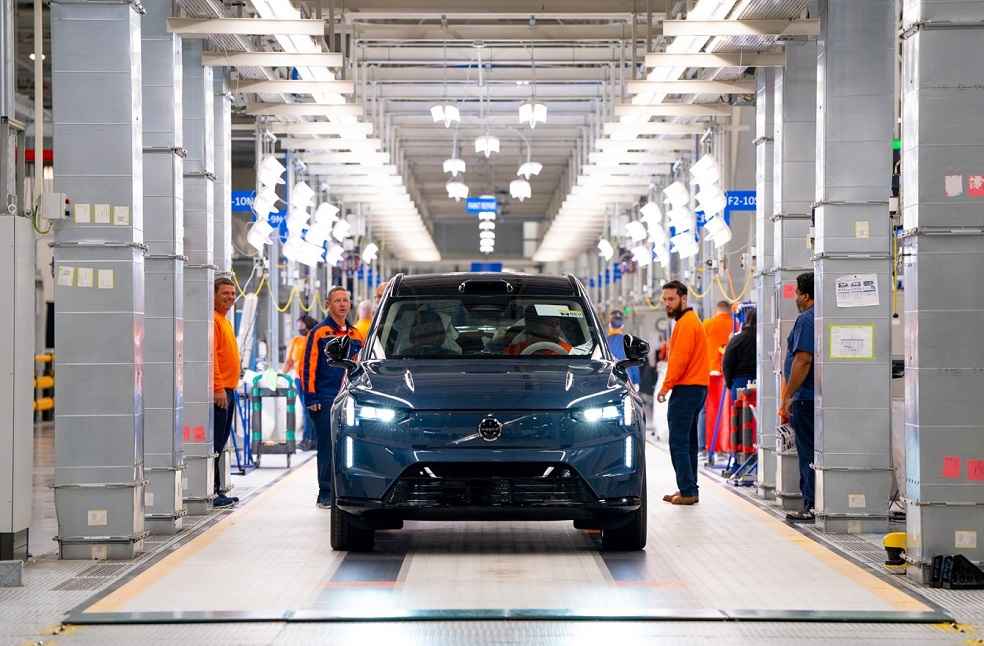The Trump administration’s decision to impose steep tariffs on foreign vehicle imports is expected to severely disrupt the automotive sector, with analysts warning of the sharpest drop in U.S. vehicle sales since the 2008 financial crisis and the COVID-19 pandemic.
According to new estimates from S&P Global Mobility, if the 25% tariffs on imported cars and parts remain in place, vehicle sales in the United States could fall by 700,000 units this year. North American auto production is also projected to decline by 1.28 million vehicles.
Patrick Anderson, founder of the Anderson Economic Group, underscored the findings, stating that elevated costs stemming from tariffs will significantly affect consumer demand. “This level of tariffs will result in a significant drop in auto sales because the higher prices will directly affect the ability and willingness of consumers to buy cars,” he said.

Tariffs on imported passenger cars and light trucks came into effect on April 3, with additional duties on imported auto parts expected to take effect by May 3. Nearly half of all light vehicles sold in the U.S. are currently subject to these levies.
In a potential softening of position, former President Donald Trump hinted that the tariffs might be adjusted, noting that automakers “need a little bit of time” to shift production from countries like Canada and Mexico to the U.S.
Canada, meanwhile, has taken measures to mitigate the impact on its automotive industry. The federal finance ministry announced a plan allowing Canadian automakers to import a limited number of U.S.-assembled vehicles tariff-free, provided they comply with the United States-Mexico-Canada Agreement (USMCA). In response to the U.S. move, Canada also imposed a 25% tariff on U.S.-made vehicles that fall outside the scope of the 2020 trade pact.
While Trump argues that tariffs are essential for protecting American jobs and reviving domestic manufacturing, critics warn that the policy could backfire. Analysts expect significant price hikes for consumers. The Anderson Economic Group estimates that vehicle costs could increase between $2,500 and $4,500 for smaller models and up to $20,000 for some imported luxury vehicles.

Zach Shefska, CEO of CarEdge, cautioned that rising prices and shrinking inventory could push more buyers into the already strained used car market. “Thanks to the chip shortage and new car production slowdown in 2020 and 2021, used vehicle supply is historically low,” he said.
Production slowdowns have already begun. Stellantis, which owns brands like Jeep and Dodge, recently announced temporary production halts at facilities in Canada and Mexico, along with the furlough of 900 workers. Experts warn that additional job losses could follow in U.S. manufacturing states like Michigan, Ohio, and Illinois.
Although many in the auto industry remain wary of the tariffs, the United Auto Workers (UAW) union has welcomed the move. UAW President Shawn Fain, a previous critic of Trump, expressed support for the policy, calling it a long-overdue correction to what he described as a “free trade disaster” for American workers.
The union has claimed that the tariffs could help bring thousands of blue-collar jobs back to the U.S., though it has not issued further comment on the latest projections.
In addition to vehicle-related tariffs, Trump earlier implemented 25% tariffs on imported steel and aluminum starting March 12, further complicating cost structures for automakers that rely on these materials.
GENERAL | Nissan to Cut Rogue SUV Production at Kyushu Plant in Japan





